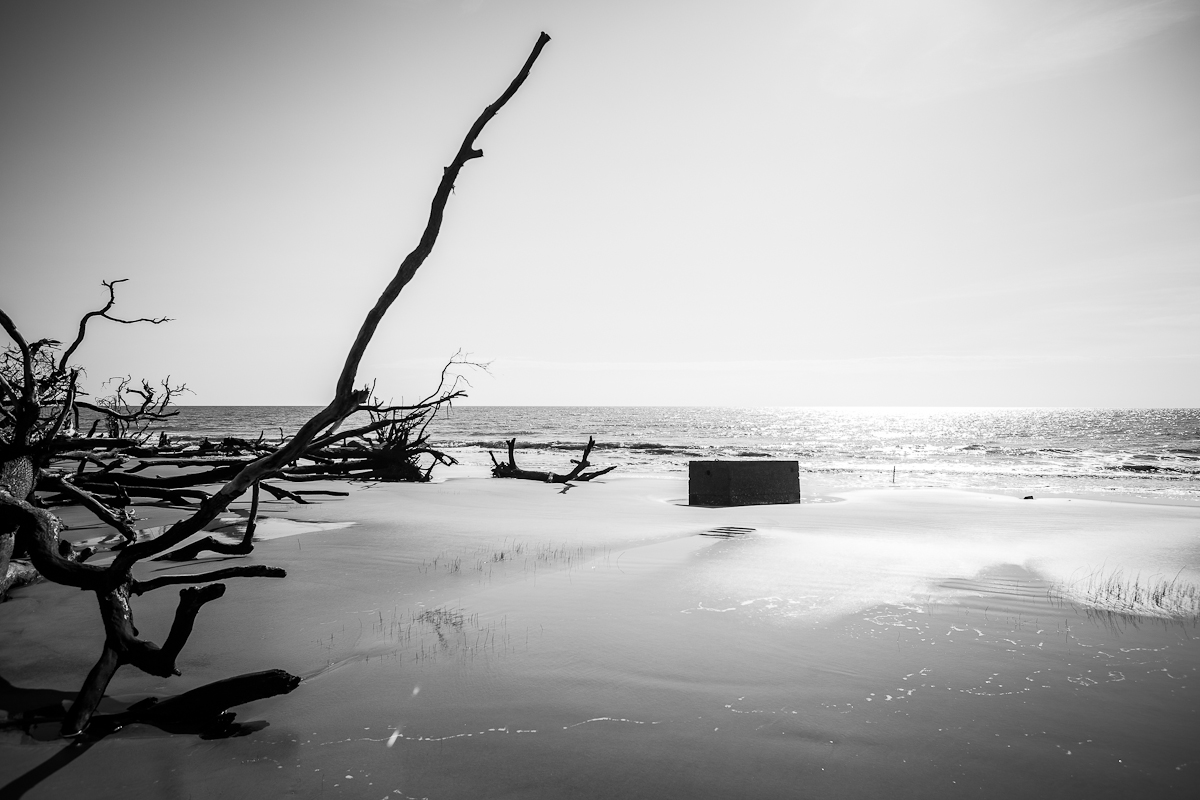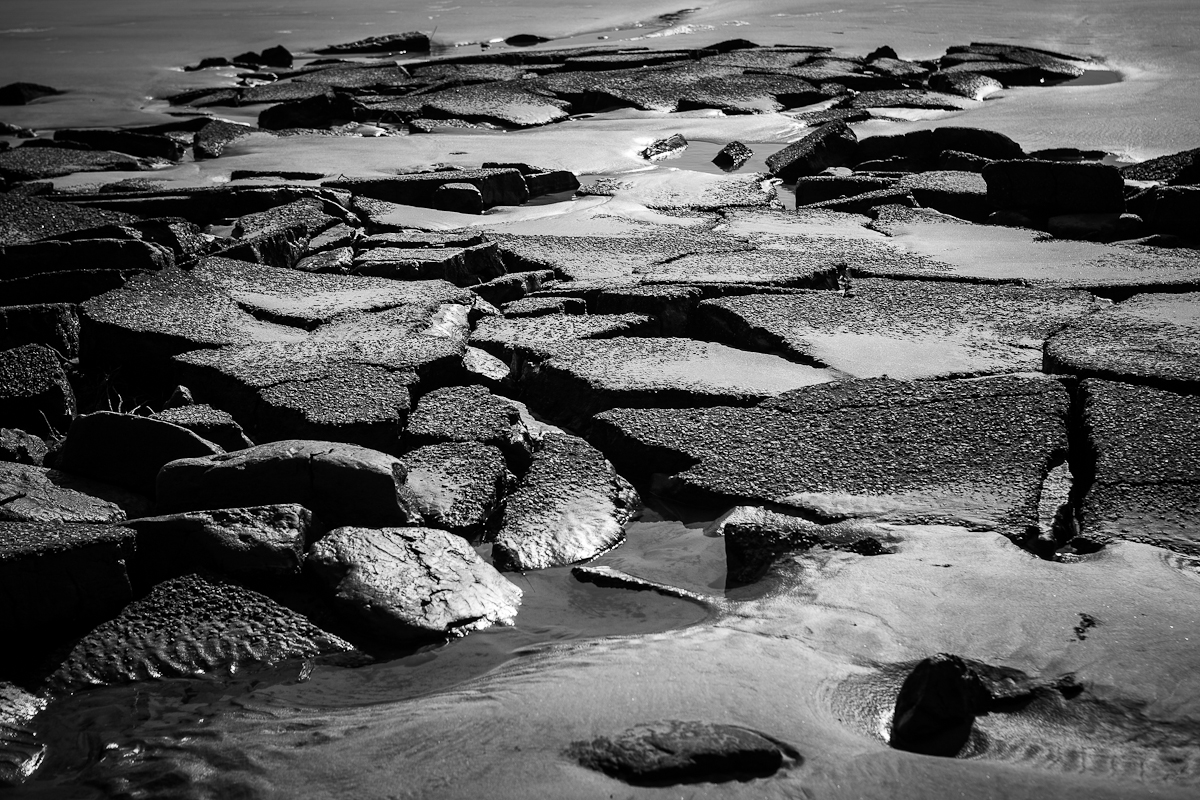"Is the road out past the trail still washed out?" I asked, as the park ranger handed us our park pass.
"Oh, yes," she replied. "You can still ride out most of the way, but you'll probably have get off your bikes eventually."
We set off on the sandy trail at the rear of the parking lot of the Hunting Island Nature Center. The trail is pretty nice. You're almost completely covered by a canopy of various trees draped by Spanish moss, while gravel, sticks and sand make for an interesting surface to ride on with 700cc tires. Oops. Thankfully, the sand is not too squirrely and the thin tires are puncture resistant.
We continue across the trail and make our way over a narrow wooden bridge that spans a small marshy, tidal creek. The trail of hard-packed sand winds on, but as I looked ahead, I could clearly see that beach was dead ahead. The path quickly faded away into soft sand with tons of tree branches, underbrush and other vegetation seemingly strewn about everywhere.
I chuckled to myself. "Yep, the road's completely gone. Time to get off and walk the bike." This was my first time riding my bike out here. My father had come once before and told me about the missing roadway that the bike path should intersect. The erosion here was pretty dramatic.
Hunting Island State Park, the most-visited state park in South Carolina, has an interesting "feature" amongst the scenic marsh views, wildlife and 19th-century lighthouse - massive erosion. As part of the Sea Islands, a chain of barrier islands along coastal South Carolina, Hunting Island gets its fair share of strong ocean currents and winds. It's one of the fastest eroding beaches on the east coast, with an estimated 15 feet of sand washed away each year. In the particularly bad 2004 hurricane season, approximately 50 feet of coastline was washed away near the south end of the island along Cabin Road.
This is where I'm standing.
Aside from one other woman hunting seashells far up in the distance, the beach is completely deserted. We decided to take a little walk. It was strange place.





















